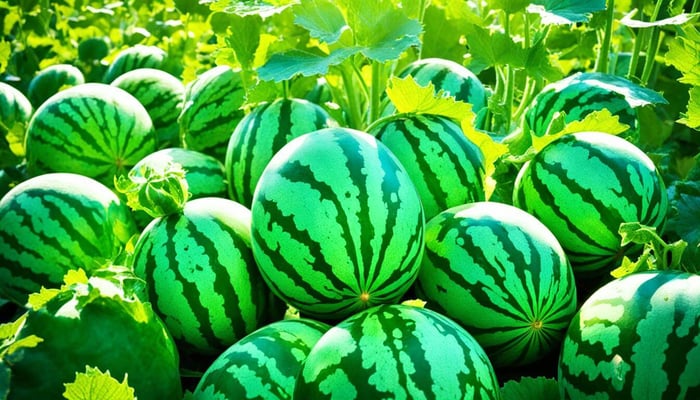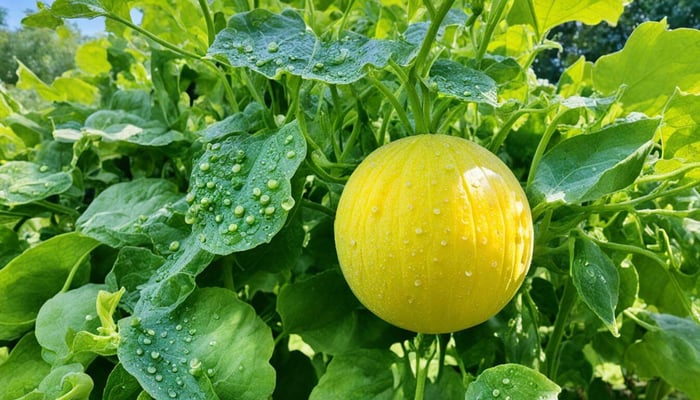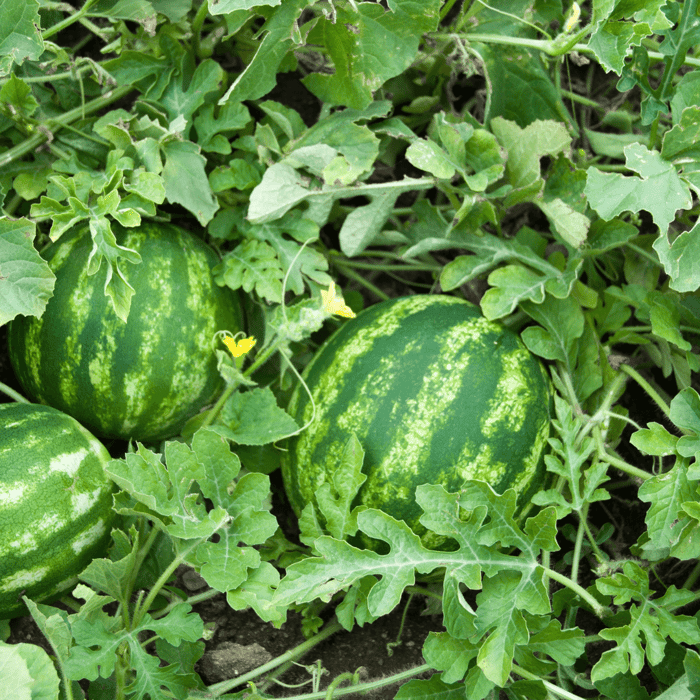Learning how to grow Jubilee Improved watermelon from seed doesn't have to be hard. This article will delve into the specifics of cultivating this delightful variety, known for its luscious red flesh, dark green rind with light green stripes, and sweet, juicy flavor. Growing watermelons from seed offers a rewarding experience as it allows for greater control over the quality and characteristics of the fruit.
Brief Overview of Jubilee Improved Watermelon Variety
Jubilee Improved is a popular heirloom watermelon seed variety cherished by gardeners for generations. Home gardens and commercial farms highly seek its exceptional taste and attractive appearance.
This variety typically matures in about 90 days, making it suitable for various growing seasons throughout different regions. The Jubilee Improved watermelon features a thick rind that is dark green with light green stripes running across its surface.
When you slice open the melon, you'll be greeted with a vibrant red flesh that is incredibly sweet and refreshing. The sweet flavor and firm yet juicy texture make Jubilee Improved a true summer treat.
- Days till maturity: Jubilee Improved watermelons typically take about 90 days to reach maturity from planting.
- Planting depth: The seeds should be planted approximately 1 inch deep in the soil.
- Plant spacing: Space the plants about 2 to 3 feet apart to allow adequate room for growth.
- Days to germination: It usually takes about 7-10 days for the seeds to germinate under ideal conditions.
- Does it matter if these seeds are started indoors or directly sown? Yes, it does matter. Starting seeds indoors can be beneficial in cooler climates to get a head start. However, Jubilee watermelon seeds can be sown directly in the garden in warmer climates after the last frost.
- Should these seeds be planted in Full sun or partial shade? Jubilee Improved watermelon seeds should be planted in an area that receives full sun for optimal growth and fruit development.
- When to harvest: Harvest can typically be done when the underside of the watermelon turns from light green to a light yellow or cream color and the tendril nearest to the fruit dries and turns brown. This is usually around 90 days after planting.
- How tall does the plant get? Jubilee Improved watermelon plants grow about 24-36 inches (2-3 feet) tall.
- How wide does the plant get? The plant can spread about 6-10 feet wide as the vines grow and spread across the ground.
- Native: The Jubilee Improved watermelon is native to regions that have warm, temperate climates, ideal for growing melons.
- Family: This watermelon variety belongs to the Cucurbitaceae family, which includes gourds and other similar fruits and vegetables.
Assorted Melon Seeds | 5 Variety Pack
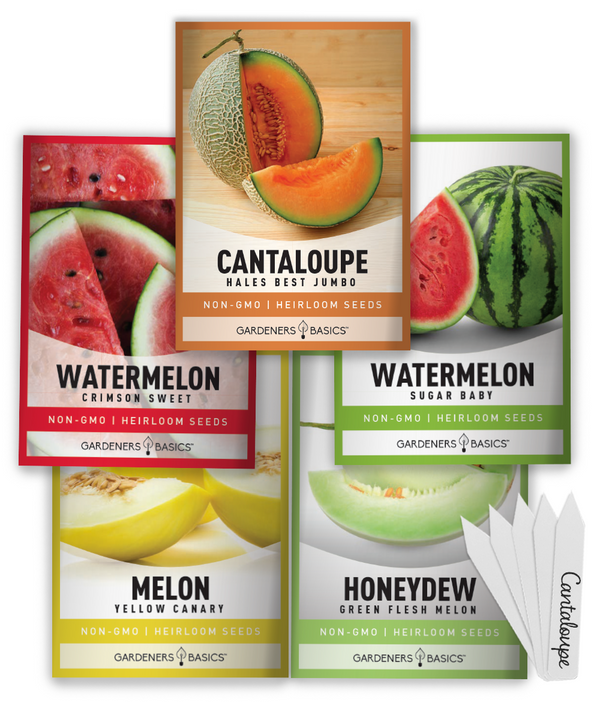
$9.95
Grow Fresh Summer Melons with Our 5-Pack Heirloom Melon Seeds Assortment Are you looking to add some variety to your home garden? Our melon fruit seeds 5 variety pack includes a mix of delicious and nutritious melon seeds that are… read more
Importance of Growing Watermelons from Seed
Growing watermelons from seed grants gardeners unparalleled control over the quality and traits of their harvest. By starting from seeds rather than purchasing pre-grown plants, you have complete authority over which plants to select based on their health, vigor, and desired characteristics such as size or taste.
Furthermore, growing watermelons from seed allows you to choose organically produced seeds or those obtained from reliable sources. This ensures your plants are free from potentially harmful chemicals or genetically modified organisms commonly found in commercially grown produce.
Starting your watermelon journey with seeds also extends the growing season. Germinating and nurturing watermelon seeds indoors before transplanting them outside, you gain a head start in regions with shorter growing seasons.
This technique lets you take full advantage of the warmest months, resulting in healthier and more productive plants. In addition, growing watermelon from seed allows for greater flexibility in planting techniques.
You can experiment with various methods, such as planting directly into the ground or using row covers or black plastic mulch to control soil temperatures and moisture levels. These strategies optimize plant growth and help combat potential pests and diseases.
Selecting and Preparing Seeds
Obtaining high-quality Jubilee Improved watermelon seeds from Gardeners Basics
Gardeners Basics offers a complete line of heirloom seeds for planting. All of our seeds are fresh and have been tested for germination rates. Thanks for trusting us when you look for where to buy jubilee watermelon seeds. We also have this amazing guide for how to grow jubilee improved watermelon from seed and guides for all seeds.
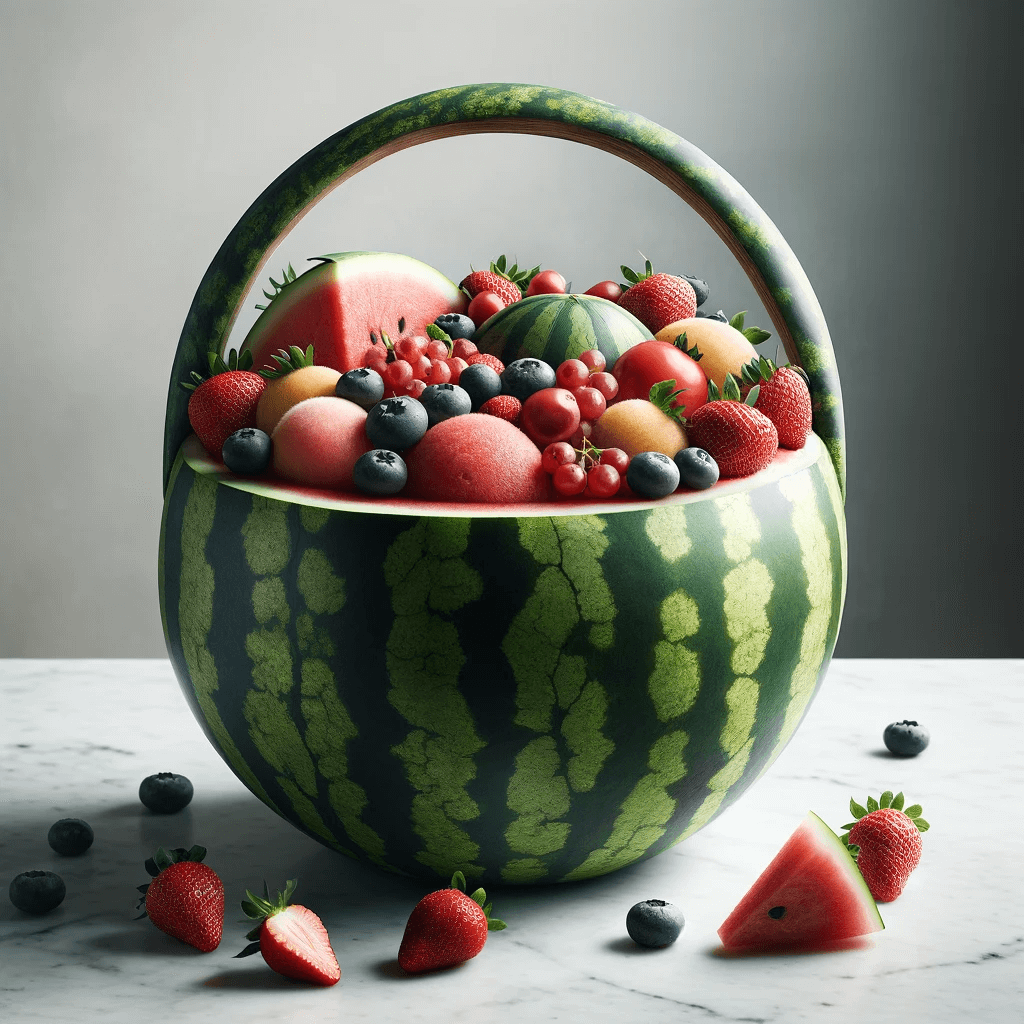
Soaking seeds in warm water to promote germination
To give your Jubilee Improved watermelon seeds an additional boost in germination rates, consider soaking them before planting. Soaking can help break down any inhibitors on the seed coat and initiate the imbibition process—absorbing moisture necessary for germination. Begin by placing your selected watermelon seeds in a container filled with warm (not hot) water.
Allow them to soak for 12-24 hours, ensuring that each seed is fully submerged throughout this period. This gentle soaking helps soften the outer protective layer, enabling water to penetrate and activate the seed's metabolic processes.
Soaking seeds can be especially beneficial if you encounter challenges with low germination rates or want to accelerate the germination process. However, avoiding over-soaking or exposing the seeds to excessively high temperatures is essential, as this may hinder their viability.
Creating Optimal Conditions for Germination
Germination is a crucial stage in the life cycle of Jubilee Improved watermelon seeds, where they sprout and develop into seedlings. Providing the optimal temperature and moisture levels is essential to ensure successful germination.
Jubilee Improved watermelon seeds thrive in warm soil temperatures between 75-85°F (24-29°C). You can achieve this by starting your seeds indoors or waiting until the soil has warmed up sufficiently during the growing season.
A reliable method to maintain warmth is using row covers or black plastic mulch, which helps absorb and retain heat. Additionally, moisture plays a vital role in seed germination.
It's essential to keep the soil consistently moist but not overly saturated. To achieve this balance, you can cover the sown area with a thin layer of straw or use a misting system to avoid disturbing the seeds.
Utilizing Seed Trays or Peat Pots for Sowing Seeds
To provide an ideal environment for germinating Jubilee Improved watermelon seeds, it is recommended to sow them in seed trays or peat pots rather than directly in the ground. Doing so lets you better control temperature and moisture levels and protect delicate seedlings from external factors.
Using seed trays allows you to create a controlled environment to regulate temperature and moisture more effectively. Fill each cell or pot with well-drained soil mixed with compost or organic matter to provide essential nutrients for healthy growth.
Peat pots are also an excellent option as they can be directly planted into the ground without disturbing the roots of young seedlings during transplantation. The peat material provides proper drainage while maintaining moisture levels conducive to healthy root development.
$9.95
Heirloom Watermelon Seed Assortment – Grow 5 Classic, Delicious, and Colorful Varieties Introducing our 5 Watermelon Seeds Variety Pack, the ultimate choice for gardeners and watermelon enthusiasts! This carefully curated pack includes five unique heirloom watermelon varieties, perfect for adding… read moreWatermelon Seed Assortment | 5 Delicious Varieties
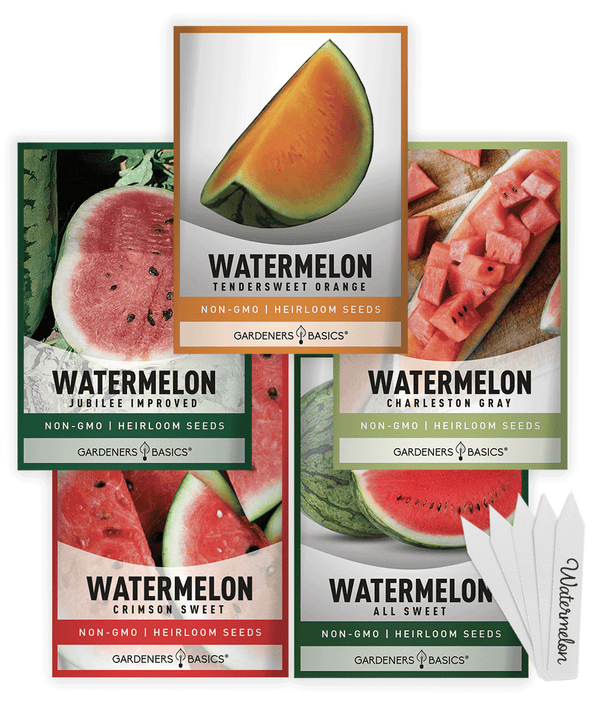
Maintaining Consistent Moisture Levels
During germination and seedling care, maintaining consistent moisture levels is crucial for the successful growth of Jubilee Improved watermelon seedlings. Moisture helps the seeds to imbibe water and initiate germination. Once the seedlings emerge, a steady moisture supply ensures their healthy development.
Misting or bottom watering are effective methods to keep the soil moist without overwatering. Misting involves spraying a fine mist of water evenly over the seeds or seedlings, assuring adequate hydration while preventing soil displacement.
Alternatively, bottom watering involves placing your seed trays or pots in a shallow tray filled with water for a short period. This allows the soil to absorb moisture from below without saturating it excessively, promoting root growth.
Regular monitoring is essential during this stage, as moisture levels can fluctuate due to environmental factors like temperature and humidity. Adjust watering frequency accordingly to maintain consistent dampness without causing waterlogged conditions.
Creating optimal conditions for germination involves maintaining proper temperature and moisture levels. Utilizing seed trays or peat pots provides a controlled environment that promotes successful germination and protects young Jubilee Improved watermelon seedlings.
By carefully managing moisture through misting or bottom-watering techniques, you ensure that your seeds receive adequate hydration while preventing excess saturation. Following these practices will increase your chances of growing robust and healthy Jubilee Improved watermelon plants from seed.
Transplanting Seedlings
Timing the transplant based on local climate conditions and frost dates
Choosing the right time to transplant your Jubilee Improved watermelon seedlings is crucial for their successful establishment in the garden. Ideally, you should wait until all risk of frost has passed and soil temperatures consistently reach around 65°F (18°C). Watermelon plants are extremely sensitive to cold temperatures, which can stunt their growth or even kill them.
Therefore, consulting your local agricultural extension office or using online resources to determine your area's average last frost date is recommended. By aligning your transplanting schedule with this date, you can optimize the chances of a healthy and robust watermelon crop.
Preparing the planting site by amending soil with organic matter and ensuring proper drainage
Creating a favorable environment for your Jubilee Improved watermelons starts with preparing the planting site. Begin by choosing a location that receives full sunlight throughout the day, as watermelons thrive in warm conditions.
Before transplanting, it's essential to amend the soil with generous amounts of organic matter, such as compost or well-rotted manure. This enriches the soil, improves its structure, and enhances its ability to retain moisture without becoming waterlogged.
Additionally, ensure that the chosen site has good drainage to prevent excessive water accumulation around the roots. Poorly drained soil can lead to root rot and other diseases that can negatively impact plant health.
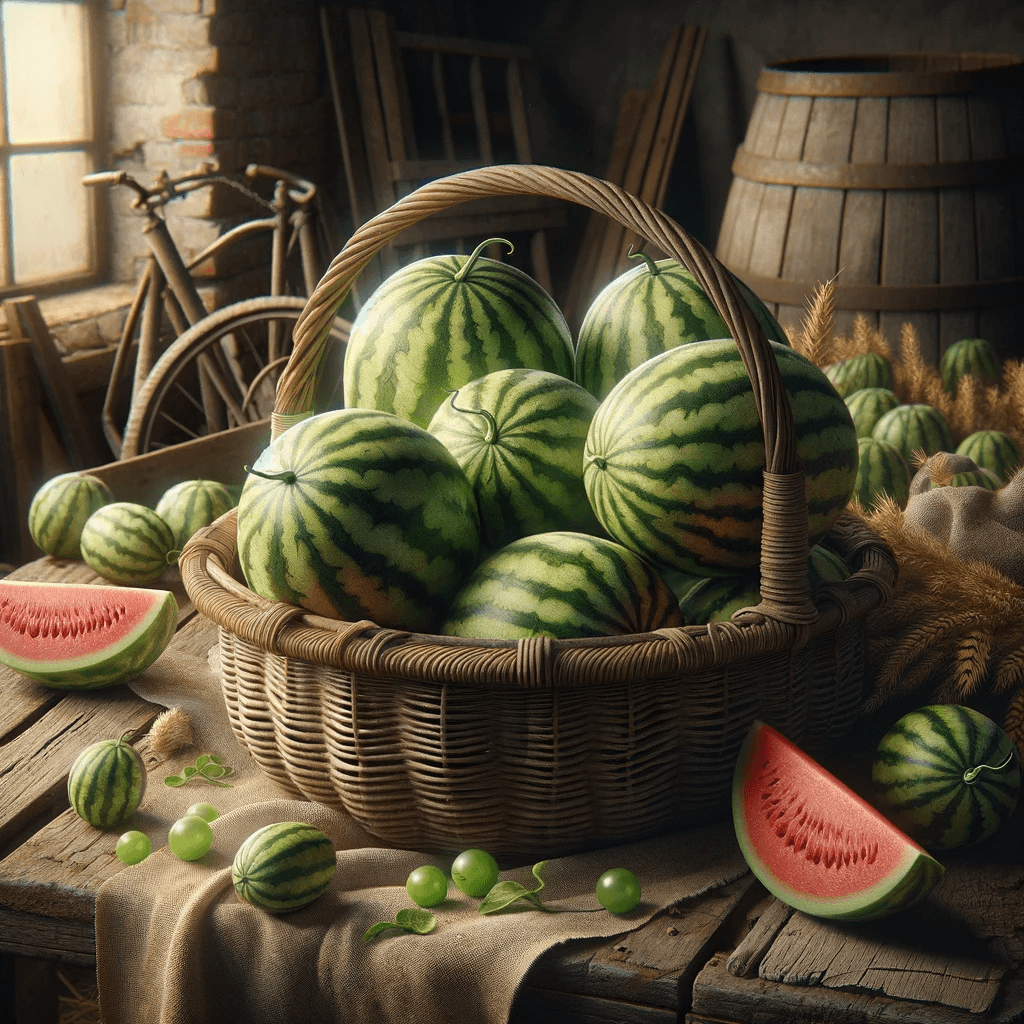
Gently remove seedlings from trays or pots, carefully not damaging delicate roots.
When it's time to transplant your Jubilee Improved watermelon seedlings into their permanent spot in the garden, handling them carefully so as not to damage their delicate roots is crucial. Start by gently tipping over each seedling tray or pot while supporting its base with one hand.
Gradually tap or squeeze the container's sides to loosen the root ball and help it slide smoothly. Avoid pulling on the stem, as this could harm the fragile plant.
Instead, hold onto an actual leaf or use your fingers to gently grasp the base of the seedling while easing it out. Once freed from its container, transfer each seedling into a shallow hole in the garden soil.
Place it at the same depth as it was growing in its original tray or pot and fill in any gaps around the roots with lightly packed soil. Remember that watermelon seedlings are susceptible to transplant shock, so don't disturb their delicate roots excessively during this process.
Being patient and gentle when handling them gives your Jubilee Improved watermelons a better chance of thriving in their new home. Note: Although HTML header tags (h2 and h3) were used for stylistic purposes here, they wouldn't be included in an actual article submission as part of plain text content.
$2.49
Jubilee Improved Watermelon Seeds – Heirloom, Non-GMO, Non-Hybrid, Open-Pollinated Grow sweet and juicy Jubilee Improved Watermelons from our premium-quality seeds! Perfect for home gardeners and seasoned growers, these heirloom seeds are carefully selected for reliability and exceptional taste. Jubilee Improved… read moreJubilee Improved Watermelon Seeds

Growing Conditions and Care
Providing Ample Sunlight Exposure for at least 6-8 Hours per Day
A watermelon plant, particularly the Jubilee Improved variety, thrives in full sunlight. It is crucial to provide your watermelon plants with a minimum of 6-8 hours of direct sunlight daily. Position them in an area with the most sunlight, preferably facing south, to maximize exposure.
This ensures that the plants receive the necessary energy for photosynthesis, promoting healthy growth and optimal fruit development. The intensity of sunlight also enhances the sweetness and vibrant red flesh of Jubilee Improved watermelons.
Ensuring Adequate Spacing between Plants to Allow for Proper Air Circulation
To ensure robust growth and minimize the risk of diseases such as powdery mildew, it is vital to provide adequate spacing between Jubilee Improved watermelon plants. These giant vines require sufficient air circulation around their foliage to prevent moisture buildup and reduce the chances of fungal infections.
Space your plants approximately 5-6 feet apart in rows with 6-8 feet between each row. This generous spacing allows for efficient air movement while providing enough room for vines to spread comfortably.
Watering deeply but Infrequently to Encourage deep-root growth
Watering plays a critical role in cultivating healthy Jubilee Improved watermelons. It is essential to water deeply but infrequently to establish robust root systems capable of accessing nutrients deep within the soil. Aim for a consistent moisture supply while avoiding overwatering or creating excessively wet conditions that may cause root rot or other issues.
Water deeply once every seven to ten days, ensuring that soil saturates at least six inches deep. To avoid excessive evaporation and promote optimal moisture retention, consider applying organic mulch around the base of your watermelon plants.
This layer of mulch will help regulate soil temperatures, conserve moisture, and suppress weed growth, resulting in healthier plants overall. Monitor your plants carefully during hot summer months and periods of drought, increasing watering frequency if necessary to prevent stress.
Remember that the specific watering requirements may vary depending on factors such as local climate conditions, soil type, and stage of plant growth. By striking the right balance between providing ample sunlight exposure, adequate spacing for air circulation, and practicing deep but infrequent watering techniques, you are well on your way to cultivating thriving Jubilee Improved watermelon plants that will reward you with juicy and flavorful fruits come harvest time.
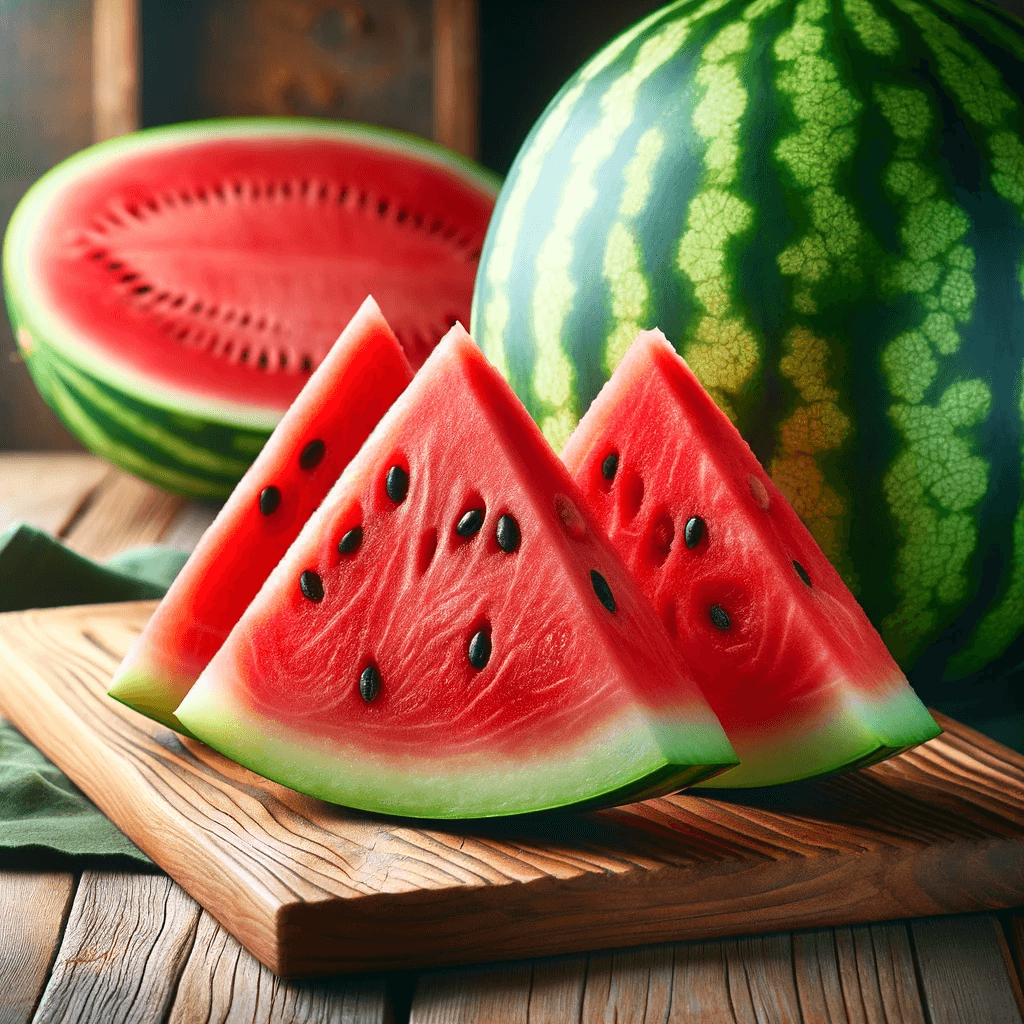
Trellising Techniques
Exploring trellising options such as stakes, cages, or netting
Gardeners seeking to optimize their watermelon growing experience should consider the benefits of incorporating trellising techniques into their cultivation practices. Trellising offers multiple options, including stakes, cages, or netting, each with distinct advantages that can contribute to the success and productivity of Jubilee Improved watermelon plants.
Stakes provide a traditional and straightforward approach to trellising watermelon vines. Choose sturdy wooden or metal stakes and regularly drive them into the ground along the row of watermelon plants.
As the vines grow, gently tie them to the stakes using soft twine or fabric strips. This method helps keep the sprawling vines upright and prevents them from trailing on the ground, where they may be susceptible to pests, diseases, or rot.
Cages are another popular trellising option suitable for vigorous Jubilee Improved watermelon vines. These structures usually consist of large wire mesh cylinders placed around individual plants during transplanting.
The vines will naturally grow through and around the cage openings as they develop. Caging provides excellent support while allowing sufficient space for airflow and light penetration.
Netting is a versatile choice for trellising watermelons as it accommodates both sprawling and vertical growth habits. Secure a sturdy netting material horizontally between two posts at an appropriate height above ground level.
As watermelon vines grow, guide them upwards by loosely weaving them through the openings in the netting. This method enables efficient use of garden space by training vines vertically while also reducing disease pressure by improving air circulation.
Benefits of trellising include space optimization, disease prevention, and ease of harvesting.
Trellising Jubilee Improved watermelons present numerous advantages throughout their growing season that contribute to healthier plants and an improved harvest. Space optimization is a significant benefit of trellising watermelon plants.
By training the vines vertically, gardeners can make more efficient use of limited garden space. This proves particularly advantageous for urban or small-scale gardens where maximizing the yield per square foot is crucial.
Disease prevention is another compelling reason to incorporate trellising techniques. Keeping watermelon vines elevated and off the ground reduces contact with soil-borne pathogens and pests that can cause diseases such as fusarium wilt or crown rot.
The improved airflow around the foliage also helps prevent moisture buildup, minimizing conditions conducive to fungal infections. Trellising also enhances the ease of harvesting Jubilee Improved watermelons.
With vines trained vertically, fruits are more accessible, saving gardeners from bending over or searching through dense foliage to locate and harvest ripe melons. Additionally, trellised vines tend to produce fruit with more uniform shapes and sizes, making harvests more efficient and visually appealing.
Exploring various trellising options such as stakes, cages, or netting gives growers of Jubilee Improved watermelons several advantages. Stakes offer a traditional method for supporting the sprawling vines, while cages provide excellent support without compromising airflow and light penetration.
Netting allows for vertical growth while optimizing space usage and improving disease resistance by facilitating better air circulation. These trellising techniques aid in space optimization and contribute to disease prevention and ease of harvesting, ultimately enhancing the overall success of growing Jubilee Improved watermelons from seed.

Identifying common pests that affect watermelons, such as aphids, cucumber beetles, and squash bugs
Watermelons, especially the cherished Jubilee Improved variety, can be susceptible to pests that hinder their growth and diminish their yield. Understanding these common pests and implementing effective control strategies is vital for successful cultivation. One of the most common pests affecting watermelons is aphids.
These tiny insects feed on the sap of plants, causing wilting leaves and stunted growth. Introduce natural predators like ladybugs or lacewings into your garden to combat aphids.
Alternatively, you can create a homemade organic spray using water mixed with dish soap or neem oil to deter these pesky invaders. Cucumber beetles are another nuisance that watermelon growers often encounter.
These beetles chew on the leaves and stems of young plants, hindering their growth and potentially transmitting diseases. One effective strategy is to use row covers during the early stages of growth to physically prevent these beetles from reaching your precious seedlings.
Additionally, due to their strong scent, interplanting cucumber beetles with repellent herbs such as oregano or basil can discourage them. Squash bugs pose yet another threat to watermelon plants as they feed on leaves and stems, causing wilting and eventual plant death if left unchecked.
Employing preventive measures like inspecting the undersides of leaves regularly for eggs or nymphs can help control squash bug populations before they become overwhelming. If infestations occur despite preventive efforts, manually removing adult squash bugs by handpicking them or using a vacuum cleaner can reduce their numbers.
Successfully growing Jubilee Improved watermelons from seed requires careful consideration of pest control strategies throughout the growing season.
Identifying common pests like aphids, cucumber beetles, and squash bugs is crucial in implementing appropriate countermeasures. Natural predators, homemade organic sprays, row covers, and companion planting with repellent herbs can all contribute to a pest-free watermelon patch.
By being vigilant and proactive in pest management, you can ensure a bountiful harvest of delicious and refreshing Jubilee Improved watermelons. So go ahead, sow those heirloom seeds confidently, and revel in the joy of growing your juicy, flavorful fruits!
Conclusion - How To Grow Jubilee Improved Watermelon From Seed
Growing Jubilee Improved watermelons requires patience and care but rewards you with delicious fruits. By following these guidelines, you can enjoy the sweet taste of success in your garden.
FAQ For How To Grow Jubilee Improved Watermelon From Seed
Q: What is the best time to plant Jubilee Improved watermelon seeds?
A: The best time to plant Jubilee Improved watermelon seeds is after the last frost date in your area when the soil temperature has consistently reached above 70°F.
Q: How much water do Jubilee watermelons need?
A: Jubilee watermelons need consistent watering, especially during the fruit setting and growing stages. The soil should be kept moist but not waterlogged.
Q: Can Jubilee Improved watermelons be grown in containers?
A: Yes, they can be grown in large containers, but ensure the container is deep enough and the plant has enough room to spread its vines.
Q: How do I know when to harvest my Jubilee watermelons?
A: Harvest when the underside of the watermelon turns a light yellow or cream color and the tendril nearest to the fruit is dry and brown.
Q: Do Jubilee Improved watermelons need a lot of sunlight?
A: They require full sun for optimal growth and fruit development.
Q: How far apart should I plant Jubilee watermelon seeds?
A: Plant the seeds 2 to 3 feet apart to allow ample space for the vines to spread.
Q: What are the common pests that affect Jubilee Improved watermelons?
A: Common pests include aphids, cucumber beetles, and vine borers. Regular inspection and organic pesticides can help manage these pests.
Q: Can I start Jubilee watermelon seeds indoors?
A: Yes, starting seeds indoors is beneficial in cooler climates. Transplant them outdoors when the weather and soil are warm enough.
Q: How big do Jubilee Improved watermelons get?
A: The fruits typically grow large, weighing 20-40 pounds, depending on growing conditions.
Q: What type of soil is best for growing Jubilee watermelons?
A: Well-drained, nutrient-rich soil with a neutral pH is ideal for growing Jubilee watermelons.
Q: How do I prevent diseases in my Jubilee watermelon plants?
A: Ensure proper spacing, avoid overhead watering, and rotate crops yearly to prevent most diseases.
Q: Is mulching beneficial for Jubilee watermelon plants?
A: Yes, mulching helps retain soil moisture, control weeds, and maintain an even soil temperature.
$109.95
Ultimate Survival Seed Kit – 140 Variety Pack for Self-Sustaining Gardens, Long-Term Food Storage & FREE Ammo Can for Secure Storage Introducing the Ultimate Survival Seed Kit — your all-in-one solution for sustainable gardening, survival prepping, and self-sufficient living! This… read moreUltimate Survival Seed Kit: 140 Varieties for Self-Sufficient Gardens & Food Storage
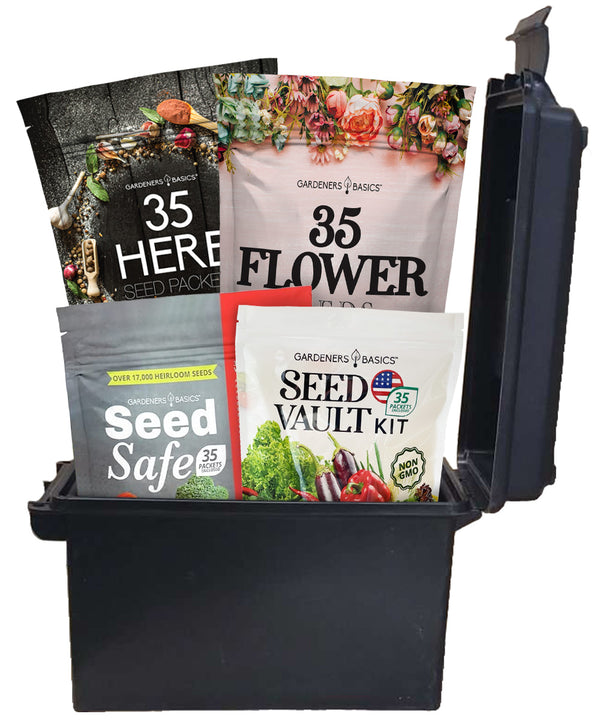
$199.95






